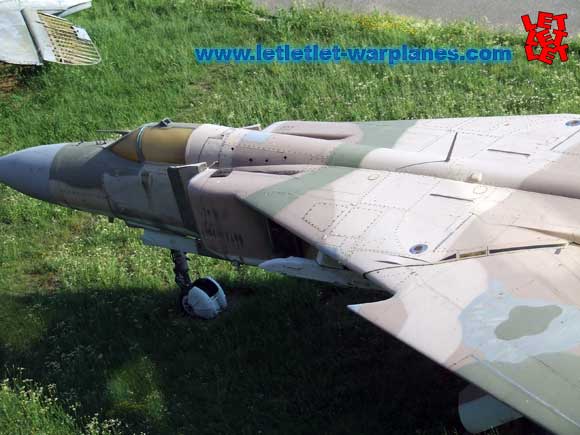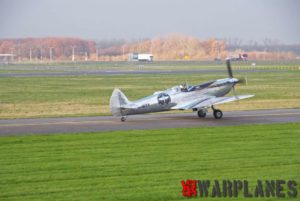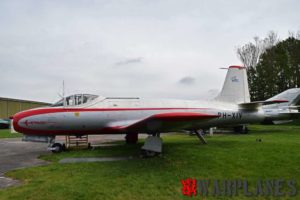MiG-23 in Belgrade
The MiG-23’s predecessor, the MiG-21 (NATO reporting name ‘Fishbed’), was fast and agile, but limited in its operational capabilities by its primitive radar, short range, and limited weapons load (restricted in some aircraft to a pair of short-range air-to-air missiles). The MiG-23 was to be a heavier, more powerful machine designed to remedy these deficiencies, and rival Western aircraft like the F-4 Phantom. The new fighter was to feature a totally new S-23 sensor and weapon system suite capable of firing beyond-visual-range (BVR) missiles.
A major design consideration was take-off and landing performance. Existing Soviet fast jets required very long runways, which combined with their limited range, limited their tactical usefulness. The Soviet Air Force demanded the new aircraft have a much shorter take-off run. Low-level speed and handling was also to be improved over the MiG-21. This led Mikoyan to consider two alternatives: lift jets, to provide an additional lift component, and variable-geometry wings, which had been developed by TsAGI for both “clean-sheet” aircraft designs and adaptations of existing designs.

The first prototype, called “23-01” but also known as the MiG-23PD, was a tailed delta similar to the MiG-21 but with two lift jets in the fuselage. However, it became apparent very early that this configuration was unsatisfactory, as the lift jets became useless dead weight once airborne. The second prototype, known as “23-11”, featured variable-geometry wings which could be set to angles of 16, 45 and 72 degrees, and it was clearly more promising. The maiden flight of 23-11 took place on 10 June 1967, and three more prototypes were prepared for further flight and system testing. All featured the Tumansky R-27-300 turbojet engine with a thrust of 7850 kp. The order to start series production of the MiG-23 was given in December 1967.
The General Dynamics F-111 and F-4 Phantom were the main Western influences on the MiG-23. The Russians, however, wanted a much lighter, single-engine fighter to maximize agility. Both the F-111 and the MiG-23 were designed as fighters, but the heavy weight of the F-111 turned it into a long-range interdictor and kept it out of the fighter role. The MiG-23’s designers kept the MiG-23 light enough to dogfight with enemy fighters.
The U.S. Air Force operated a small number of MiG-23s, officially designated YF-113, as both test and evaluation aircraft and in an aggressor role for fighter pilot training, from 1977 through 1988 in a program codenamed “Constant Peg”.
Sample machine on images is the MiG-23 stored in the Museum in Belgrade.
Darko Mladenovic
Photos- Darko Mladenovic Text- Wikipedia

































